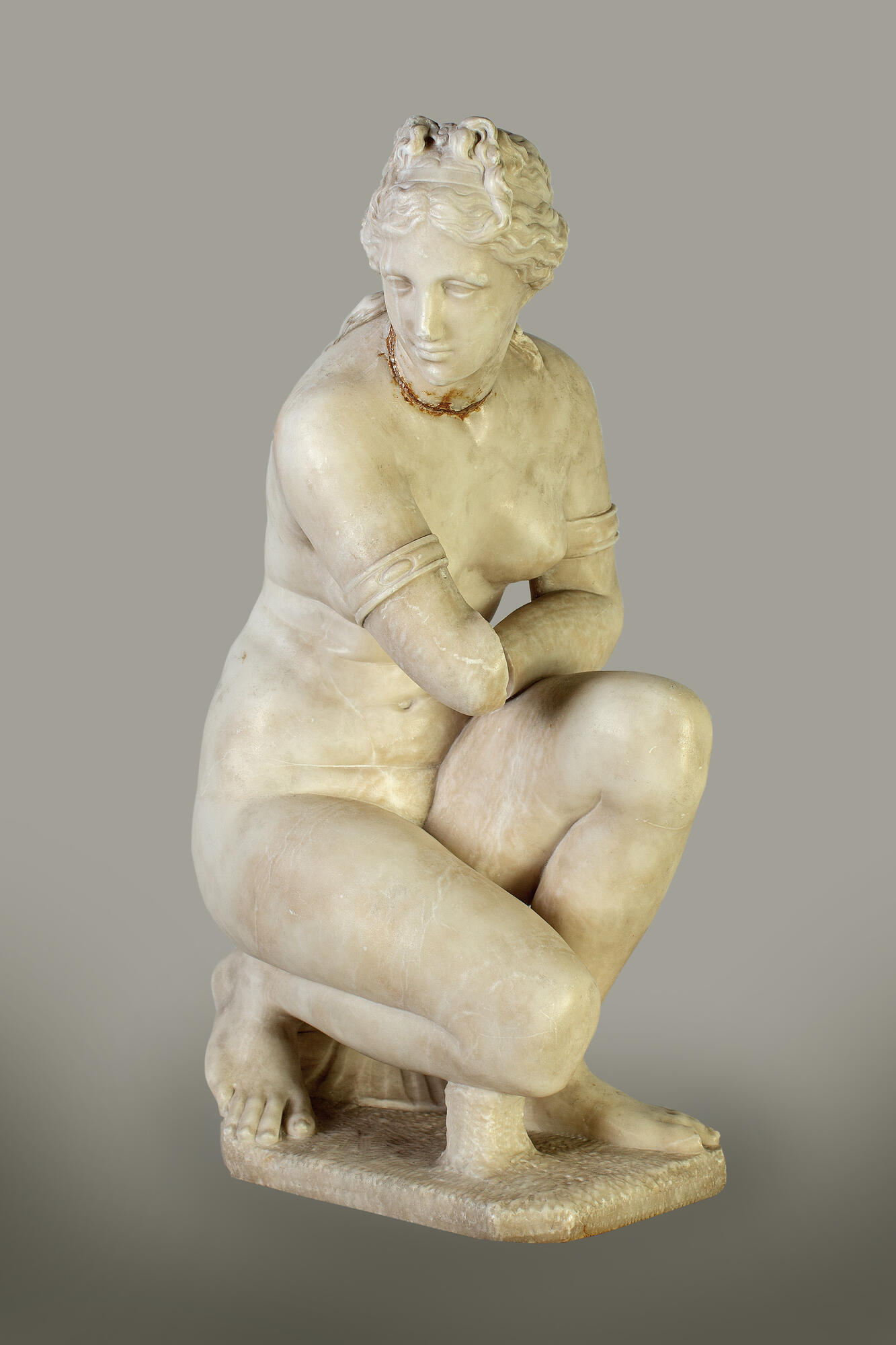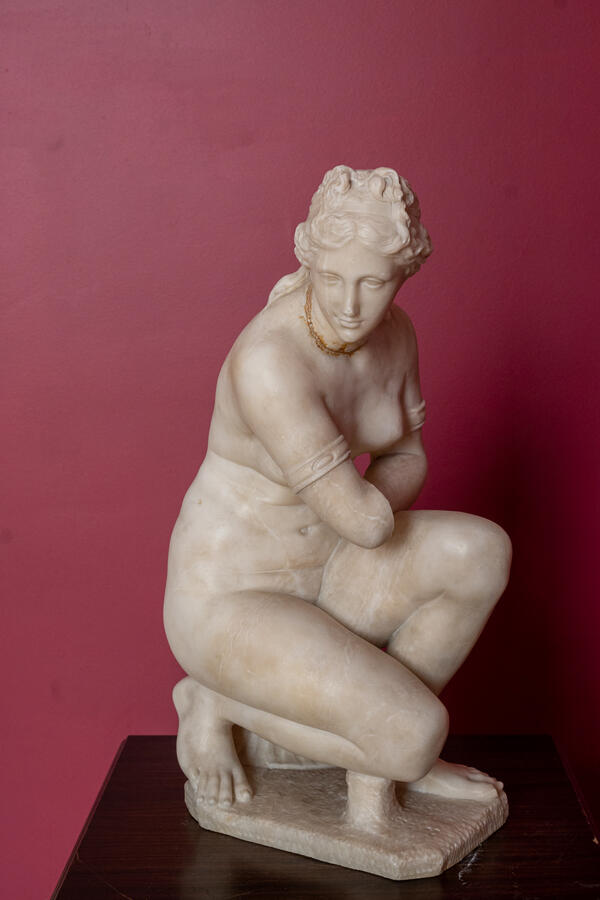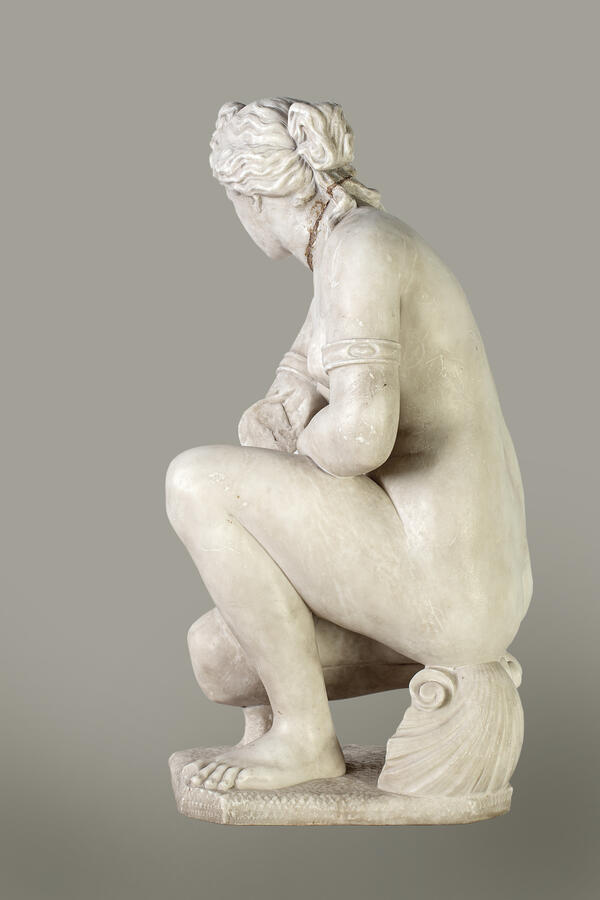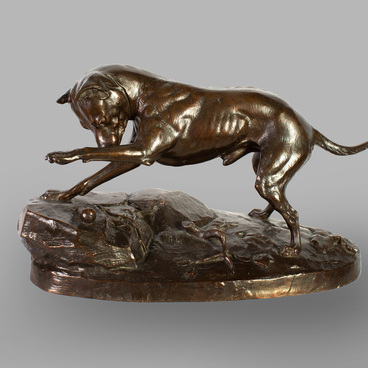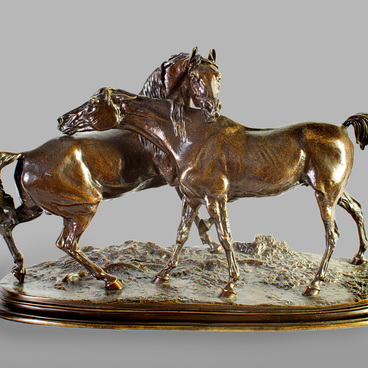In the first third of the 19th century, the interior of wealthy Russian houses often featured decorative sculpture with images inspired by ancient statues, in particular, the Crouching Aphrodite. This work is a copy of an ancient statue, which is kept in the Vatican and is probably based on the work of the ancient Greek sculptor Daedalsas from Bithynia.
Combining the exactness and restraint of classical art with verisimilitude, this image first appeared in Hellenistic art and perfectly suited the tastes of the early 19th century and the Empire style. A figure of the Crouching Aphrodite could be seen both in a nobleman’s bedroom and an artist’s studio. Numerous versions of this image differed in attributes and size and apparently were made not only in Italy but also in Russia.
The statue from the Tambov Regional Art Gallery depicts a very young goddess Aphrodite: she seems to have just emerged from the sea foam on the Greek islands. Her left leg rests upon a large seashell. The goddess attempts to cover up modestly for fear of being seen and at the same time demonstrates her beautiful body. The image of Aphrodite from the Tambov Art Gallery is similar to the image of Venus from the Uffizi Gallery.
Both of these statues have the goddess wearing a bracelet with precious stones on her left hand. Unfortunately, the “Aphrodite” from the Tambov Art Gallery has not been preserved perfectly. The broken head of the figurine has been restored rather crudely. Despite the damage, the statue is still remarkable for the lively beauty of the goddess’ naked body which the unknown sculptor achieved by the soft manner of modeling.
The name Aphrodite comes from the ancient Greek “Ἀφροδίτη” which in ancient times was interpreted as a derivative of “ἀφρός” meaning “sea-foam”. In Greek mythology, she is the goddess of beauty and love, one of the twelve Olympians. Aphrodite was also venerated as the goddess of fertility, eternal spring, and life. Sometimes she was referred to as the goddess of marriages and even childbirth, as well as the one taking care of children. Aphrodite is one of the most frequently depicted Greek goddesses. Her image determined the standards of female beauty for many centuries.
Combining the exactness and restraint of classical art with verisimilitude, this image first appeared in Hellenistic art and perfectly suited the tastes of the early 19th century and the Empire style. A figure of the Crouching Aphrodite could be seen both in a nobleman’s bedroom and an artist’s studio. Numerous versions of this image differed in attributes and size and apparently were made not only in Italy but also in Russia.
The statue from the Tambov Regional Art Gallery depicts a very young goddess Aphrodite: she seems to have just emerged from the sea foam on the Greek islands. Her left leg rests upon a large seashell. The goddess attempts to cover up modestly for fear of being seen and at the same time demonstrates her beautiful body. The image of Aphrodite from the Tambov Art Gallery is similar to the image of Venus from the Uffizi Gallery.
Both of these statues have the goddess wearing a bracelet with precious stones on her left hand. Unfortunately, the “Aphrodite” from the Tambov Art Gallery has not been preserved perfectly. The broken head of the figurine has been restored rather crudely. Despite the damage, the statue is still remarkable for the lively beauty of the goddess’ naked body which the unknown sculptor achieved by the soft manner of modeling.
The name Aphrodite comes from the ancient Greek “Ἀφροδίτη” which in ancient times was interpreted as a derivative of “ἀφρός” meaning “sea-foam”. In Greek mythology, she is the goddess of beauty and love, one of the twelve Olympians. Aphrodite was also venerated as the goddess of fertility, eternal spring, and life. Sometimes she was referred to as the goddess of marriages and even childbirth, as well as the one taking care of children. Aphrodite is one of the most frequently depicted Greek goddesses. Her image determined the standards of female beauty for many centuries.
